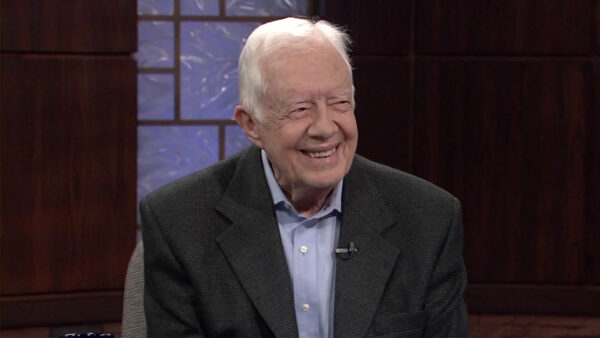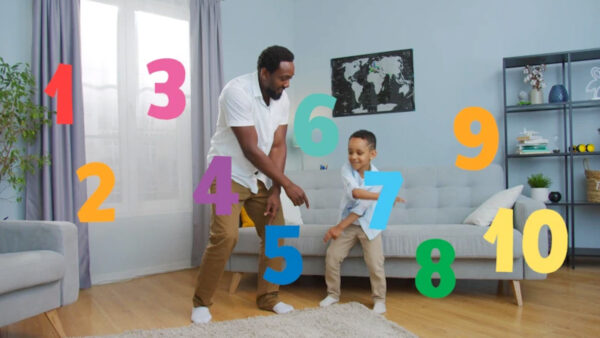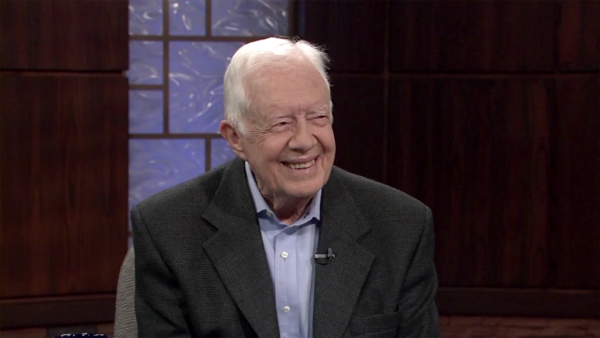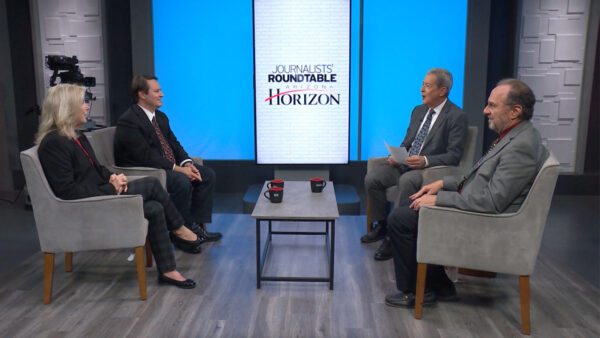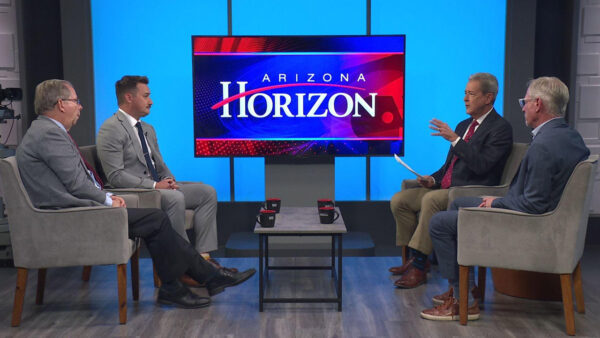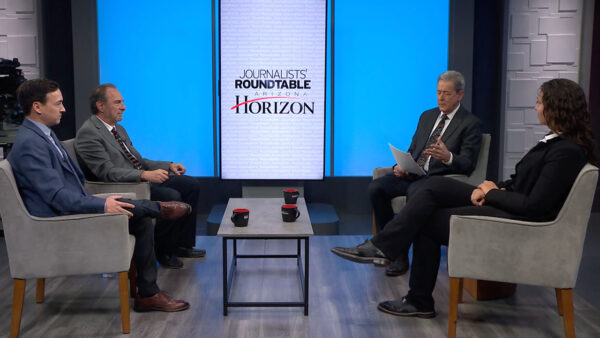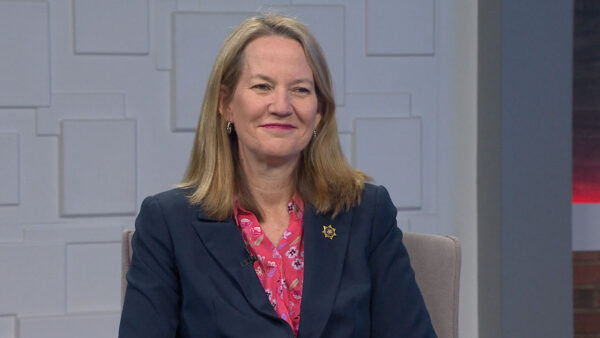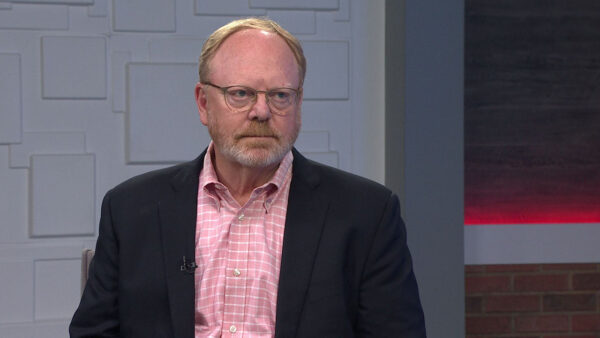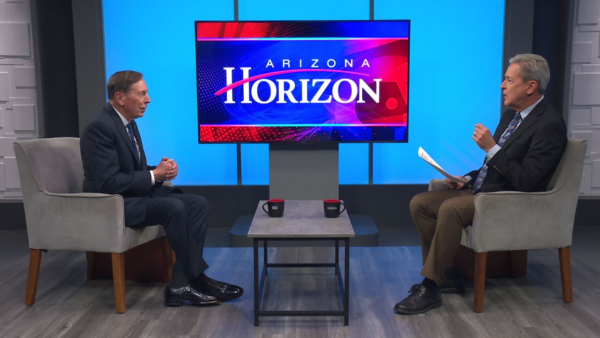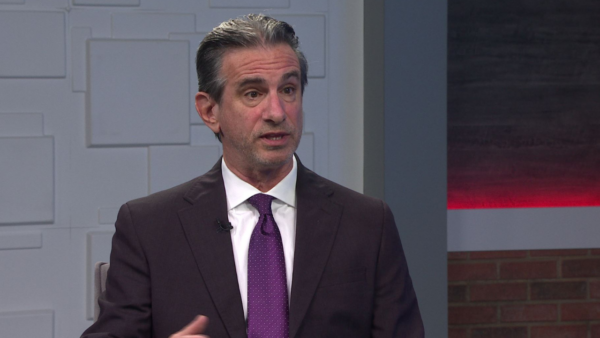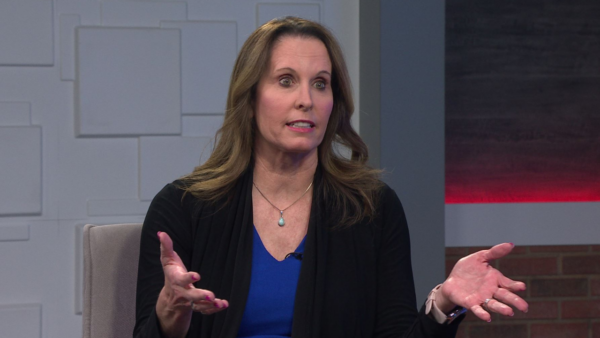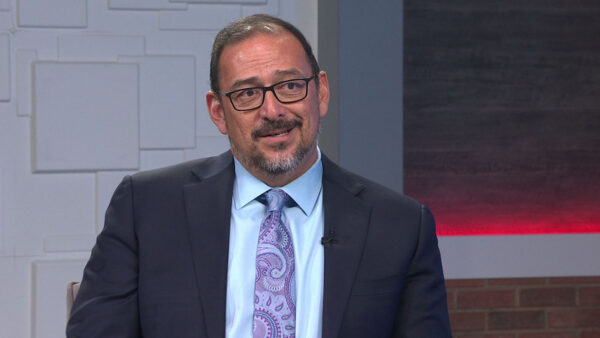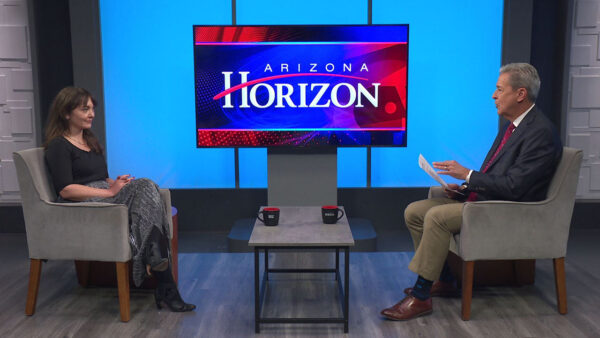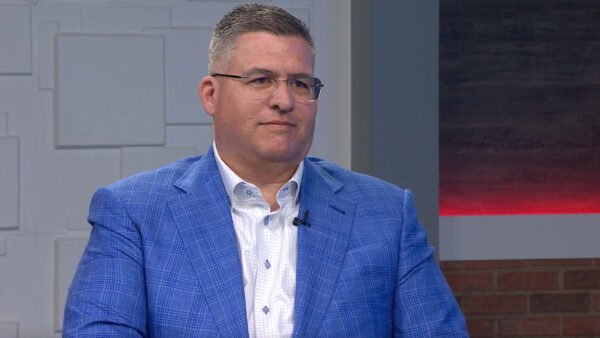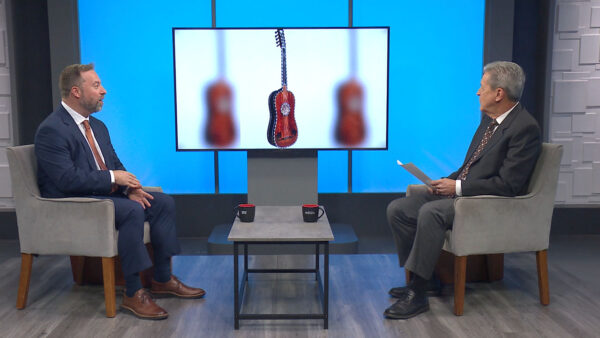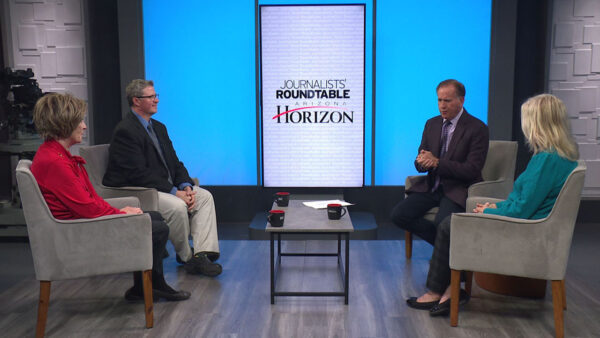A compilation of recent Arizona Horizon debates/discussions on the ballot propositions. Included in this program are Prop 116 (Business Equipment Tax Exemptions); Prop 117 (Property Tax Valuation Limits); and Prop 119 (State Trust Land Exchanges).
Click here to watch Prop 116
Click here to watch Prop 117
Click here to watch Prop 119
Ted Simons: Good evening. Welcome to the special vote 2012 edition of "Arizona Horizon." I'm Ted Simons. Tonight we continue our in depth coverage of the propositions on November's ballot. We'll hear about proposition 116, designed to reduce tax burden on businesses. We'll learn about proposition 117, which limits the annual increase in the value of assessed property used to calculate property taxes and prop 119 would allow Arizona to swap state trust land for other public lands. We begin our coverage tonight with a look at proposition 116, also known as the small business job creation act. This constitutional amendment referred to the ballot by the legislature would give businesses a larger personal property tax break on new equipment and machinery. Currently the first $68,000 of property is exempted from taxation. Prop 116 would exempt the full cash value of business equipment and machinery up to an amount equal to annual earnings of 50 workers in Arizona. I talked about proposition 116 with supporter Farrell Quinlan, state director for the national federation of independent business T. has no organized opposition. Good to see you. Thanks for joining us.
Farrell Quinlan: Thank you.
Ted Simons: Why is this necessary?
Farrell Quinlan: Well, because it's part of the constitution, this has been an issue that's been sort of festering over the last few decades. Taxing the equipment and machinery a business owns has a very counterproductive effect on job creation. We're essentially punishing a business for investing in the things that are necessary for creating new jobs, and in this environment where we have sluggish job creation and our unemployment rate is around 8 or more, and you have -- if you add in the underemployed and the folks who have just given up you could say one in five Arizona once would rather be working right now. So we're trying to give small businesses especially the incentive to go out and invest in new equipment and machinery and that will we believe create thousands of new jobs.
Ted Simons: Again, as we mentioned, currently it's 50,000 plus inflation which gets you up to the 68,000. How does this 50 workers at an annual earnings -- how did that come about?
Ferrell Quinlan: There is a formula; it's the $50,000 plus inflation factor. We were looking at other formulas, and since we had to go to the voters anywhere we wanted to make sure this measure was tied to jobs. Wages track with inflation and the overall economy. So that will grow as time goes on. We've learned within our constitution there's a 300,000 or 350,000 dollar absolute limit on indebtedness, which is the a ridiculous number now, but 100 years ago it was enough to built the cap capitol. Today it's ridiculous. Then you force policy makers to play games. We're trying to stay away from a dollar figure number and go to a formula that is linked to something that means something to jobs.
Ted Simons: And this will only apply to new equipment, equipment already in existence, no go, correct?
Ferrell Quinlan: Everything that's on the books right now stays under the current rules, everything purchased January 1st onward would be subject to a new hire exemption level. So if you're a business and you do nothing, you're not going to get hurt or benefited. Only companies that go out and invest in new equipment and machinery will get any tax benefit on that investment.
Ted Simons: Estimated cost out of all this, out of the general fund? What are we looking at? I've read anywhere from six, seven, $8 million.
Ferrell Quinlan: There is a function of a formula that evens out any disruptions in the property tax system and the state general fund takes care of that. That's what the $8 million annually comes in. But that's a very small amount of money compared to the $10 billion that the state of Arizona spends every year.
Ted Simons: What about the cost much just trying to figure out what's new equipment and what's old equipment? Do we have the resources for that sort of thing?
Ferrell Quinlan: Right now every piece much equipment is already cataloged and valued and already has a date. Because there is depreciation over time. It's just a question of creating a second column with after January 1st of 2013, and just putting things in that column. So everything already has a date, it's just how you account for it.
Ted Simons: So maybe a few new workers but not too many?
Ferrell Quinlan: In materials of compliance costs?
Ted Simons: Yes.
Ferrell Quinlan: It's literally I'd say it's -- it's an Excel spreadsheet.
Ted Simons: Some concerns, we're going to talk more about this in our next debate, of shifting property tax burdens to homeowners, residential, basically shifting the burden. How do you respond to that?
Ferrell Quinlan: We had the joint legislative budget committee do an analysis of this and they found there was a, quote, almost negligible impact to homeowners 0.3% annual impact on the -- which could be in some ways a shift, and what they said is in a typical residential property, it could be as high as a $3 shift. However, they also said that the amount of change was so small that it's not even factored in terms of when they -- when the jurisdictions look to adjust the rates. It is such a small amount, it's not even enough to move the needle. It's a theoretical shift because the amounts are so small.
Ted Simons: As far as less revenue for local governments, I know there's concern there as well. Less revenue for everything. How do you respond to that?
Ferrell Quinlan: The real problem is the fact there is less money coming in on personal property tax because we've seen a 56% drop in Maricopa County, for instance, in the acquisition of new equipment and machinery since 2008. So there's no mystery why we're not growing jobs because we are not making the investments our private sector is not buying the equipment and machinery they need to create those jobs. So what we're hoping is to get us back on a more normal situation where we're acquiring new equipment.
Ted Simons: Basically when people say it sounds like the money will be shifted from one thing to another, it could be social services, it could be benefits, the whole nine yards, you say not necessarily so.
Ferrell Quinlan: The local property tax is local. So it's mostly at the local government and school district level. And what we've seen is we've had no opposition from the school districts or local governments. The realtors and prop 13 Arizona folks were very sensitive to any changes the homeowner of property taxes are not opposed to this. In fact the prop 13 Arizona folks are in favor of it. It is an antiquated tax. It punishes the kind of investment we need to create jobs and we've seen across the board support. We've got 30 votes out of 30 in the senate, and everyone in the house who voted, voted for it. You've got the house minority leader and the senate majority leader on the same team, you don't see that very often. I guess it's the exception that proves the rules.
Ted Simons: All right. Good stuff. Thank you for joining us.
Ferrell Quinlan: Thank you.
We continue with another tax related value lot measure, proposition 117. It's a constitutional amendment referred to the ballot by state lawmakers. It would limit the annual increase in assessed property value to more than 5%. I spoke for Kevin McCarthy, president of the Arizona tax research association, which supports proposition 117, and we heard from Maricopa County treasurer Charles Hoskins, who is opposed to the measure. Thank you so much for joining us. We appreciate it. Kevin, again, why is this proposition necessary?
Kevin McCarthy: Well, we think it's very necessary. Arizona is infamous for having one of the most complicated property tax systems in the country. This doesn't fix all the problems but we have a one-time opportunity to fix a couple of complications we think are particularly problematic. We are the only state in the country that confuses taxpayers, for instance, with two sets of taxable values that their property is taxed on. These were measures that were put in the Arizona constitution back in 1980. One of those taxable values is unlimited in how much it can grow, which means tax exposure can be extreme when you have surges in the real estate market. The other limited value is limited to 10% a year. And if that wasn't complicated enough it's limited to 25% of the difference of this year's secondary and last year's limited value. In my 26 years in the business, if you want to lose credibility with taxpayers in terms of them understanding the system, develop one that does that. So one of the first things 117 does is we're getting rid of the two taxable values. We'll have one simple assets of assessed value and that will be limited in growth to 5% a year.
Ted Simons: Why not simplify things, say 5% ball game.
Charles "Hos" Hoskins: Well, I congratulate them for attempting to simplify things, but it also has some side effects. Experts agree that whenever you limit growth of value, it ends up switching the tax burden to residential property. And if you go online and search for property value limits, you'll find many references that says that it will shift the burden, it sometimes is confusing, and it creates inequities within a class. And that is a pretty serious issue. That could end up being unconstitutional.
Ted Simons: Let's -- we have two things there. We'll get to the inequities, but the idea of shifting to residential. Is that a valid argument?
Kevin McCarthy: It would be the reverse probably in Arizona. If you look at historical trends, in the last real estate boom, residential property increased in value at twice the rate of commercial property. So if you wanted to look in Arizona and say, could this have some interplay between locally assessed homes and businesses, the reverse argument is made. This is the classic argument to try to defeat any effort of tax reform is always to try to have taxpayers look inward and tell themselves, the standard trick is to suggest this is bad for homeowners. You'd have to ignore how bad the current system is for homeowners first to be able to develop such an argument.
Ted Simons: A trick, he says.
Charles "Hos" Hoskins: It is at this time bad for homeowners because homeowners have held their value better than commercial property. Especially in the retirement community. What this would do, this prop 117, it would lock values in at -- where there would be a disparity between the market value of residential property and other property, so residential properties would be subsidizing those other properties for many years until that 5% could catch up.
Ted Simons: How many years?
Charles "Hos" Hoskins: And that would also be more noticeable in the retirement communities because they are closer to full market value. If there is a 30% difference between the market values of residential and the other properties, just on a straight line, it would take six years to catch up and they would be subsidizing those properties during that period of time.
Ted Simons: Again, sounds like another shift of the burden here.
Kevin McCarthy: No. In fact, the retirement communities in Arizona were damaged as much if not more by the rapid growth in values than any other property. What tax payers need to do is look at their bills. Intuitively all property taxpayers know if you allow an unlimited increase in the taxable value and you have what occurred in Arizona in 2000 homeowners saw a 60% increase in their value in one year, during that period of time, we had a record increase in tax levies. Folks who benefit from that system, tax collectors, tax consultants, they're going to try to confuse and divide taxpayers. But intuitively taxpayers know when their value skyrockets so does their taxes. That's something 117 will stop.
Ted Simons: Protecting against real estate booms. Valid argument?
Charles "Hos" Hoskins: Not entirely, because it will allow tax rates to increase. Mr. McCarthy was quoted in an article recently that was published that says there's nothing in 117 that prevents increases in tax rates. So if you limit the growth in value, you increase the tax rates, because the process starts with the levy of each of the districts. School districts, for instance. And then you take the taxable value within that school district and divide it into the levy and you get a tax rate. If you limit that and the budget goes up or increases more than 5%, the tax rate goes up. So it will increase -- there's nothing to prevent tax increases in prop 117.
Ted Simons: Last point on this, sounds like something's got to give.
Kevin McCarthy: There's all sorts of things to prevent taxes when -- last time value skyrocketed, 150 jurisdictions in Arizona didn't adjust their tax rates down a penny. We had record tax increases as a result of that. If taxpayers know one thing, they've heard it once they've heard it 100 times, it didn't increase your antioxidants because it left the tax rate the same. That won't happen with 117. They'll have to be honest, they'll be -- there will be transparency, they'll say we want more money than that and there will be need to address the tax rate accordingly.
Ted Simons: Doesn't sound like it could be fair, sounds like it could be unconstitutional against -- is that integrity real? Is that possible?
Kevin McCarthy: Let's talk about the constitutionality. Certainly the -- HOS could have availed to himself through all these arguments when it was referred through the Arizona legislature. The whole referral senate bill, senate concurrent resolution 1025 was analyzed by all the lawyers at the capitol that. Wasn't an argument that won the day. We picked 5% for a reason. 5% unlike the studies that the treasurer will refer, to tracks about the normal growth trend in Arizona. We think the 5% growth trend will ensure that there are not distortions between classes, but it will, that is 5% limit will make sure when we have a real estate boom, those values are brought into the system slower.
Ted Simons: No disproportionate shift he says.
Charles "Hos" Hoskins: That is contrary to numerous experts. These people are Ph.D.s, they're professors in universe, they're internationally recognized. I agree with these experts. There will be shifts, and I encouraging anyone that has any question about it to do their own research. Go online, look for property value limits, and there's a website that just came up, it's WWW.stopprop117.com where there will be information on that. I do agree with these people that it will do three things -- it will increase taxes by shifting -- to homeowners, it will shift the burden, and it will create inequities and no I'm not really convinced it will be any more simple.
Ted Simons: OK. Not more simple. Just a simple fact that it's supposed to be simplified -- it doesn't sound like he's buying it.
Kevin McCarthy: He's not, but gladly in the light of day at the Arizona legislature a bipartisan group much legislators who think this system desperately needs to be reformed didn't see it any of the ways the treasurer does. This doesn't shift taxes from businesses to residential property. And I would encourage all the taxpayers out there, get your bill out. See if you benefit from a system that allows for 60% increase in value and a skyrocket can bill along with it.
Ted Simons: We need to stop it there. Gentlemen, great discussion. Thanks for joining us.
Ted Simons: We end our show tonight with a look at proposition 119, which calls for changing Arizona's constitution to allow for trading of state trust land for other public lands. It's not the first time the issue has been put before voters but this attempt addresses concerns to the point that there's no organized opposition. I spoke with state land department commissioner Maria buyer about proposition 119. Thanks for joining us on "Arizona Horizon."
Maria Baier: Thank you.
Ted Simons: What exactly does this proposition call for?
Maria Baier: This proposition would authorize the state land department to enter into exchanges with other public land management agencies, mostly the BLM for the purposes of better land management practices, most notably to provide buffer zones around military bases so we keep our military bases intact in Arizona.
Ted Simons: So the land that's around a military base, would this be private land? Would this be the state saying, we'll give you developer some trust land, provided you let us get this buffer zone going? How does that work?
Maria Baier: What we would do is we would give control of state trust land that is in the hands of the state right now. We would trade that land that's in or near military bases, and put that into federal hands, and then in exchange, we would take land from the federal inventory of lands into the state land trust. And so the feds would end up with land around military bases to protect their missions, for example, takeoffs and landings for air missions down in Fort Huachuca, the sanctity of the electronic range, the silence in that area, and then in exchange, we get federal lands where into the state trust land inventory so we can make money off those lands, which is our mission.
Ted Simons: And if it means making money off those lands, selling to a developer or some such, that happens, but that's way down the line.
Maria Baier: That's typically way down the line. And most of the time I think land in the area that we're talking about would probably be put into the trust for the purposes of grazing. Also, the exchange authority would allow us to engage in conservation management, and so there are areas where right now there are conservation designations over state trust land. Those are better managed by the feds. And again, we could take land out of their inventory and put those lands that are revenue producing lands into the hands of the state. So it would be great not only for saving military base, but also for conservation areas.
Ted Simons: I was going to say, the focus is on military but there are other aspects.
Maria Baier: Absolutely. It's just really good land management practice to have consolidated areas in one -- and one ownership. In the case of the military, you'd want it in federal ownership, and in the case of conservation areas, you might want it in federal management, in the case of revenue producing properties, that should be in the state trust land inventory.
Ted Simons: The idea of swapping state trust land under the general umbrella here, I think failed like seven times. Why is this different than previous attempts?
Maria Baier: Well, this ballot prop mirrors the one that was on the ballot a couple of years ago fairly closely because the purpose was for conservation, the purpose was for military base preservation, it was limited to government-to-government exchanges and had a public process like this one and appraisals. And so that one failed by less than a percentage point. And so we resurrected that, we're going to ask the voters to take a second look at it. We think we'll pass this time. The truth is, we have no time and no money for a campaign last time around, but this time we're trying to do a better job educating voters. And we think it's going to save 96,000 jobs in the state of Arizona. That's what the military has. And also about $9 billion economic impact. So saving those military bases in Arizona is very important. And then getting revenue producing land into the hands of the state trust is also important because what we do is make money for public schools.
Ted Simons: And as far as the opposition is concerned, there doesn't seem to be any organized opposition. Am I missing something out there?
Maria Baier: There is no organized opposition. We're not aware of any opponents at this point. We have the conservation community, the military support groups are behind us, we have the schools, we have a wide array of supporters. No detractors, and I think it's just a matter of people understanding what the impact of this might be. And the impact is substantial on the state of Arizona.
Ted Simons: Can you talk about the collaboration between environmental groups, Sierra Club and such, and the military? How did you get those folks together and talk about that dynamic?
Maria Baier: A lot of the credit goes to Senator John Nelson who ran this measure through the legislature to get it onto the ballot. And he was -- he just realized the conservation community was going to be key to get public approval. And so he brought them in, and the negotiations, some of the provisions that you see is what brought everybody to the table. The military knew that they -- they know they need these buffers, and so they were very good participants from the get-go government public to public exchanges, we care very much about there being a conservation component. We care very much about the transparency of the process and so thus the public meetings that are required. And that all of this is based on appraisals. So no side gets taken to the cleaners. So all these safeguards are in place for these exchanges. And it's a huge benefit.
Ted Simons: I was going to say the public oversight, you have to have hearings, you have to have legislative approvals, you have to have the voter OK. That's a lot of hoops and hurdles to get through.
Maria Baier: It's a lot of hoops and hurdles, but it's transparent, and it really is a safeguard to anything that might be inappropriate because at the end of the day, you rely on the Democratic process for approval. So it goes to a vote of the public and if they take a look and say it's the right thing, then the exchange is complete.
Ted Simons: How much in the way of land are we talking about? We looked at a map, maybe we can get that back up. The blue area was state trust land and the pink area was military facility. What are we looking at in terms of numbers?
Maria Baier: Well, let me say that almost all of the military installation, in are dozens across the state of Arizona, at the end of the day, there's a few identified on the map. But in the area of most of these military installations, there are state trust lands that could be used to help preserve the mission. The inventory of state lands across the state is 9.3 million acers. And so we cover 13% of the surface area of Arizona. So in many in or near many of those bases there are state trust lands that can help preserve the mission. The inventory of lands that we would likely get to trade from would be BLM. They manage about 13 million acres of land across the state. So you can see that we both have very attractive inventories of land that we could find ways to exchange for the betterment of Arizona.
Ted Simons: If let's say a land -- near a military base or environmentally sensitive area, and we had to get the hearings and the legislative approval and the voter OK, and the whole nine yards, what kind of time frame are we looking at here for a deal? A swap, if you will?
Maria Baier: You know, it's hard to say. As with any land transaction, but I would say by the time that the lands are identified, probably a year to two years, I would say the first one might take longer because you have to work out the process that after that, you know, we just have to make sure we could get it to the ballot. General election. So that's every other year.
Ted Simons: All right. Very good. Good information. Thank you so much for joining us. We appreciate it.
Maria Baier: Thank you, Ted. Oh, can I say one thing?
Ted Simons: Sure.
Maria Baier: The website is yesonprop119.com. Hopefully people can visit it.
Ted Simons: Thank you.
Maria Baier: Thank you.
